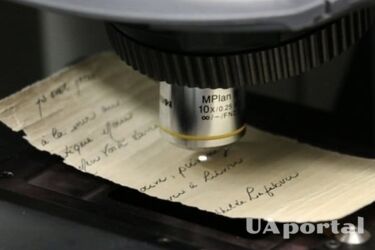A letter thrown into the ocean by a girl from the Titanic was found in Canada: what is written

Scientists from Canada are studying a mysterious letter that was likely thrown into the Atlantic Ocean by a girl on board the Titanic. This letter, dated 1912, does indeed exist, but researchers are considering the possibility of its falsification.
HB writes reports on it.
On a spring day in 1912, 12-year-old Matilda Lefebvre, along with her mother, brothers, and sisters, was traveling by ship across the Atlantic, dreaming of meeting her relatives in the United States after a long separation. Unfortunately, their reunion did not materialize, as the ship they were traveling on was the famous Titanic, which sank.
A team of researchers from the University of Quebec decided to find out if the letter that was found on the Canadian coast really belonged to Matilda Lefebvre over a century ago.
"I'm throwing this bottle into the sea in the middle of the Atlantic Ocean. In a few days, we will reach New York," the letter reads. "If anyone finds it, please inform the Lefebvre family in Leuven."
The message signed "Matilda Lefebvre," was found by a family from New Brunswick on the sandy coast near the Bay of Fundy.
"So far, we have not been able to detect any signs of forgery," said Nicolas Beaudry, a professor of history and archeology at the University of Quebec who is studying the letter. According to him, it is known that Matilda Lefebvre was indeed a passenger on the Titanic.
"She was the daughter of Frank Lefebvre, a miner from northern France who went to seek his fortune in America," Beaudry added.
Frank Lefebvre found a job in the American mining industry in Iowa and moved there with his four older children. After earning a sufficient amount of money, he invited his wife and four younger children, including Matilda, to join him.
The team of scientists should be able to date the letter using radiocarbon analysis of the materials on which it was written, as well as the bottle it was found in and its stopper.
Read also: Ancient treasure hidden in a ceramic jug found in Poland (photo)
"Now the materials are consistent with the time, but this does not exclude the possibility of forgery or a prank," said Beaudry.
At the time, hoaxes were popular because the press often published maritime stories that attracted readers' attention.
"That's why the team is also focusing on analyzing the handwriting and language used in the letter," Beaudry emphasized.
In general, it is too early to conclude the authenticity of the letter, and there is a possibility that the exact answer to this question will not be found.
As a reminder, metal detectors in Romania found a treasure with medieval coins in the forest.
If you want to get the latest news about the war and events in Ukraine, subscribe to our Telegram channel!
